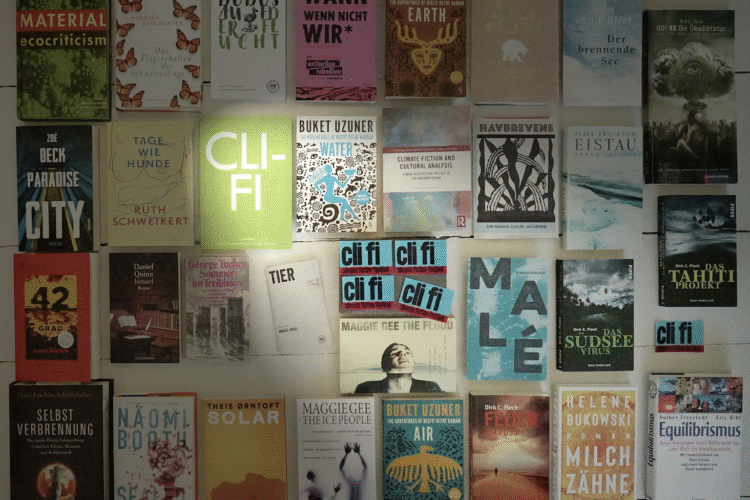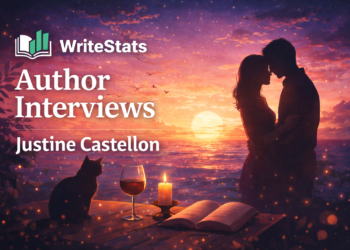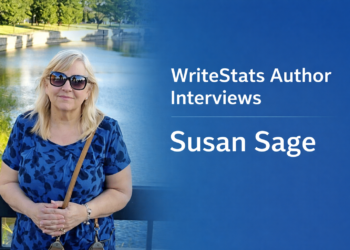Climate fiction, or “cli-fi“, has rapidly climbed genre charts in 2025. Once a niche branch of science fiction, cli-fi now stands alongside major genres like sci-fi and fantasy.
And this isn’t just hype: the numbers tell the story. In nonfiction, climate books have exploded, with their share of published books rising from 0.6% in 2011 to 2% in 2021. This surge is reflected in fiction as well; by 2025, 3.5% of all published books fall into this category, showing a real hunger for stories about our planet’s future.
Why Readers Are Turning to Cli-Fi
The short answer? The world feels uncertain. People are seeking safe and creative ways to cope with their fears. Sci-fi usually asks “what if?” and fantasy is just a way to escape. Cli-fi, on the other hand, is a blend of the two: it’s speculative and gripping, yet it’s also grounded in real-world problems we’re facing today.
Climate fiction helps readers cope with concerns about issues like rising seas, wildfires, and floods by providing emotional relief and new perspectives. Readers may feel empowered and gain ideas for addressing real problems, finding hope and inspiration that lasts beyond the story.
From Despair to Hope
Cli-fi used to be predominantly dystopian, with stories that often ended badly and depicted how society and the environment would collapse. Things are changing now. More and more, writers are experimenting with hopepunk and solarpunk, creating communities that evolve, generate new ideas, and sometimes achieve success.
Today’s wave of novels is more hopeful than hopeless. Many stories not only highlight the risks of climate change, but also offer readers actionable solutions, a sense of agency, and the satisfaction of seeing resilience and adaptation in action.
Cli-Fi in the Spotlight
2025 marks a turning point. The newly launched Climate Fiction Prize crowned its first winner this year: Abi Daré’s And So I Roar. That kind of recognition officially puts cli-fi on the literary map. Even mainstream critics now acknowledge it as a genre in its own right, no longer just a sub-branch of sci-fi.
For writers, this means opportunity: not only are publishers, agents, and readers actively seeking these narratives, but cli-fi authors can directly influence important conversations and reach audiences eager for stories that matter.
But who makes up the growing audience for this genre?
Research indicates that cli-fi readers are typically younger and more politically engaged, but the genre now also attracts fans of literary fiction, thrillers, and romance, thanks to its urgent, relevant themes woven into familiar storylines.
Barbara Kingsolver’s Flight Behavior and Richard Powers’ The Overstory are prime examples of literary cli-fi that drew wide audiences. Paolo Bacigalupi’s The Water Knife illustrates how a climate-driven premise can deliver a gripping thriller. Meanwhile, Kim Stanley Robinson’s The Ministry for the Future blends policy detail and human stories, achieving a result that’s both terrifying and addictive.
Market Entry: Breaking Into the Cli-Fi Space
For new authors, cli-fi is one of the most exciting genres to query at the moment. Here’s how to get your foot in the door:
- Target the right agents. Look for agents who represent speculative fiction, environmental writing, or literary fiction with a social focus. Many are now openly listing climate fiction as a category of interest.
- Check submission calls. Small presses and anthologies are actively seeking cli-fi stories, particularly in subgenres such as solarpunk. These can be excellent entry points.
- Build credibility. Publishing shorter cli-fi in magazines (Granta, Lightspeed, Clarkesworld) can boost your visibility before querying a novel.
- Leverage awards. Keep an eye on the Climate Fiction Prize, eco-literary awards, and themed contests; they can be career-changing exposure for debut authors.
Platforms such as Duotrope and Submittable are useful for finding current submission calls from various publishers. Additionally, subscribing to newsletters like The Submission Grinder or Authors Publish can help you stay updated on opportunities tailored for emerging cli-fi authors.
Tips for Authors Writing Cli-Fi
Here are some practical ways to stand out in this booming genre:
- Put people first. Readers care about characters, not charts or data. Ground your story in relationships and personal stakes. Consider portraying characters in conflict with themselves or others as they navigate a changing world. Think of Atwood’s MaddAddam trilogy. Yes, it’s speculative, but it’s the people that pull you in.
- Balance fact with imagination. Research climate science, but don’t drown your reader in it. Use real issues as a springboard for “what if” scenarios. This will help keep your narrative engaging and relevant without coming across as a lecture. Kim Stanley Robinson’s work is a great model for this.
- Explore hope as well as fear. Dystopias are powerful, but there is a growing appetite for resilience, adaptation, and even renewal. Highlight stories of survival and rebuilding that inspire as much as they warn. Solarpunk anthologies are a good reference point here.
- Blend genres. Climate fiction doesn’t have to look like sci-fi. Try weaving climate themes into thrillers, romances, mysteries, or family dramas. This approach can broaden your audience and bring fresh elements to familiar plotlines. Example: Bacigalupi’s The Water Knife reads like a noir thriller, but its setting makes it cli-fi.
- Stay plugged into real-world conversations. Climate fiction resonates most when it feels timely. Align releases with Earth Day, collaborate with eco-literary groups, or draw inspiration from today’s headlines. This connection to ongoing discussions can boost your story’s impact.
Things to Stay Away From When Writing
Even the strongest ideas can falter if they are not handled properly. Here are a few common mistakes in climate fiction:
- Overloading with info-dumps. Readers don’t want textbooks disguised as novels. Blend research into the story naturally.
- Focusing only on disasters. Endless catastrophe can numb readers. Balance crisis with moments of humanity and hope.
- Preaching to the choir. Heavy-handed moralizing turns readers off. Let the narrative speak through characters and plot.
- Forgetting entertainment. A cli-fi novel must still be a story. Suspense, romance, humor, or drama; these are the hooks that keep readers turning pages.
Building Credible Worlds In Climate Fiction
Readers can spot shaky science a mile away, so it’s important to ground your story in real data. Here are great places to start:
- IPCC Reports (Intergovernmental Panel on Climate Change): Gold-standard science written for policymakers, publicly available online.
- NASA and NOAA websites: Excellent for up-to-date climate data, maps, and projections.
- Scientific journalism: Outlets like Scientific American, Nature News, and National Geographic distill complex issues into accessible language.
- NGOs and think tanks: The World Resources Institute, Climate Central, and Union of Concerned Scientists publish reliable insights.
- Academic collaborations: Many climate scientists are open to interviews, reaching out can help ensure your fiction reflects real-world dynamics.
Pro tip: You don’t need to use all the science you research. Let it inform your worldbuilding, but only show readers what the story demands.
The Takeaway
Cli-fi isn’t a passing trend; it’s becoming a defining genre. Readers get timely stories that make them reflect on environmental concerns and possible solutions. Writers reach new audiences, inspire, and inform.
That might be cli-fi’s greatest strength: as an author, you’re not only seeking profit but also contributing to an urgent cultural dialogue about our planet’s future.
If you’ve been sitting on a cli-fi story idea, 2025 is the year to bring it to life.









